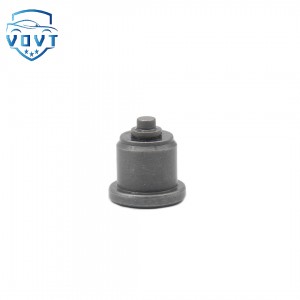High Quality VE1 Delivery Valve 146430-0020 Diesel Engine Spare Parts for ISUZU 4VE/5MM
Products Description
| Reference Codes | 146430-0020 |
| Application | / |
| MOQ | 12 PCS |
| Certification | ISO9001 |
| Place of Origin | China |
| Packaging | Neutral packing |
| Quality Control | 100% tested before shipment |
| Lead time | 7~15 working days |
| Payment | T/T, L/C, Paypal, Western Union, MoneyGram or as your requirement |
Common malfunctions of the outlet valve
A variety of malfunctions may occur during the use of the outlet valve, the following are some common malfunctions and their causes:
Poor sealing
Wear and tear: frequent contact and relative movement between the outlet valve and the valve seat over a long period of time will lead to wear and tear of the sealing surface, which will reduce the precision of the fit, thus failing to realize good sealing, resulting in fuel leakage and affecting the stability of the pressure of the fuel system and the effect of fuel injection.
Impurity damage: impurities in the fuel, particles, etc. may enter between the outlet valve and the valve seat, when the outlet valve is closed, these impurities will scratch the sealing surface, damaging the sealing performance, resulting in the return of fuel in the high-pressure fuel line at the end of the injection, so that the injector nozzle dripping phenomenon, which affects the engine's combustion effect and performance.
Deformation: The outlet valve or valve seat working under long-term high pressure and high temperature environment may be deformed, so that the sealing surface can not be closely fit, resulting in poor sealing.
Stuck
Foreign matter blockage: If the fuel filter is not filtered well, larger impurity particles may enter the inside of the fuel outlet valve and jam the valve spool, so that it cannot move up and down normally in the valve seat, resulting in the fuel outlet valve not being able to open and close on time, affecting the normal supply and injection of fuel.
Gum precipitation: Gum, wax and other components in the fuel may precipitate and accumulate on the surface of the delivery valve during long-term use, increasing the friction between the valve spool and the valve seat, thus leading to valve spool stagnation.
Poor lubrication: the movement of the delivery valve needs good lubrication, if the lubrication components in the fuel are insufficient or the delivery valve is poorly lubricated due to other reasons, it will increase the friction between the valve spool and the valve seat, which will easily lead to the stagnation phenomenon.
Spring failure
Weakening of elasticity: The spring of the delivery valve will be gradually fatigued and its elasticity will be weakened under the action of high temperature and alternating stress for a long time. After the elasticity of the spring is weakened, it can not provide enough elasticity to make the outlet valve close quickly, which will lead to the delay of the end of the injection moment, the injection is not dry, affecting the engine combustion process and performance.
Spring breakage: The spring may break due to material problems, manufacturing defects or excessive stress over a long period of time. After the spring breaks, the outlet valve can not work properly, and there will be problems such as uncontrolled injection and abnormal fuel system pressure, which will seriously affect the normal operation of the engine.
Decompression ring belt failure
Wear: The decompression ring belt will gradually wear out due to constant friction with the wall of the valve seat hole during the working process. After the decompression ring belt is worn, its decompression effect will be weakened, resulting in the end of the injection of high-pressure fuel pipe pressure can not be quickly reduced, which may make the injector nozzle secondary injection phenomenon, affecting the atomization of the fuel and combustion effect, increasing fuel consumption and pollutant emissions.
Corrosion: If the fuel contains corrosive components, or the engine working environment is humid, etc., the pressure-reducing ring belt may corrode, destroying its surface finish and dimensional accuracy, affecting the normal play of the pressure-reducing function.























